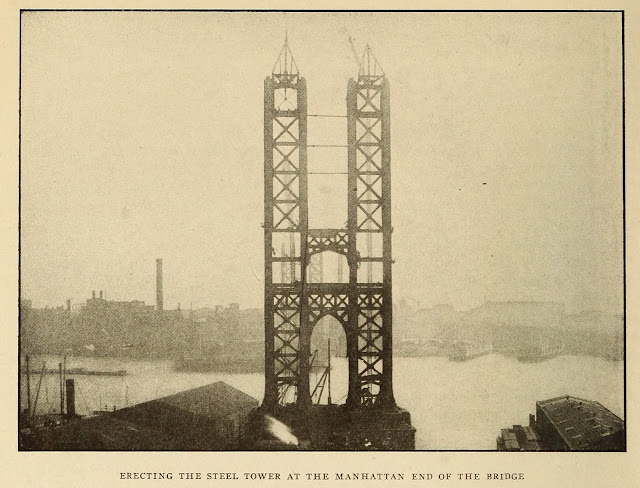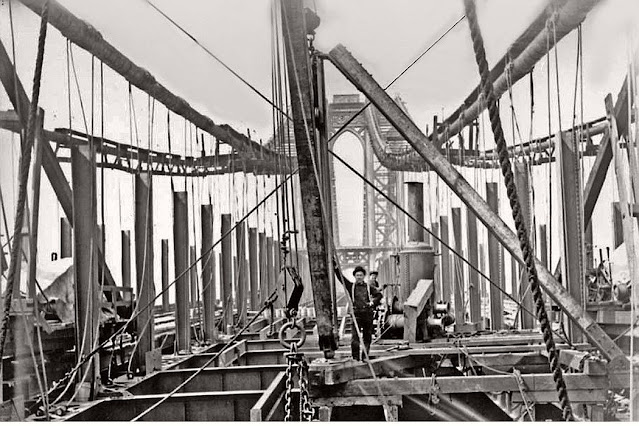Who would have guessed that Archer Avenue used to have interesting bridges. Obviously the remnants of Bubbly Creek used to be considered navigable because the CN/GM&O/Alton bridge was movable.
 |
| Lynn Henschel-Drayer posted View of the streetcar crossing the Archer Avenue Bridge over the South Branch of the Chicago River in Chicago, Illinois. The streetcar is approaching a curve in the tracks. The Archer Avenue Bridge, a trunnion bascule bridge, connected the McKinley Park and Bridgeport community areas. [This comment about it being a cable car was wrong, but I include it because it provides the dates for cable car service in Chicago. I was wondering about those dates just a week ago. Other comments indicate they would not run a cable car route over a movable bridge.] Michael Bose This picture must have been taken between 1893 and 1906. The "street car" is a Chicago cable car, and the line it is on was among the last to be converted from horse-drawn to cable car. There are no overhead wires, and no trolley poles on the car; also the iron lined slot between the tracks is a giveaway that's it's a cable car. Chicago's cable car system was the world's largest in 1900, bigger than San Francisco's, but it was all converted to electric trolley cars by 1906 (a decade after the El was converted from steam to electric). Michael Bose There had been a lot of accidents with people being run over by the cable car when trying to board with the car moving. The guards were added to keep people out from under the car. [Eugene Klichowski commented that the partial view of the bridge on the left is the predecessor of today's Alton Bridge. That must have been before the tracks were elevated. I wonder what the truss bridge on the right was for.] Eugene Klichowski The fork close to Archer bubbles today because of the waste from the soap factories that were on the east bank. It was the east west portion that was called Bubbly Creek in the early 1900's and the reversal of the Chicago river in 1900 pushed 500 gallons of water into the stock yards every day, keeping the waste from entering the mouth of the south fork. In wet seasons Bubbly Creek would flow towards Mud Lake. |
 |
| Lynn commented on her post This is the original bridge at that site.. It was built in 1870 and replaced in 1906. |
 |
| Gary Statkus commented on Lynn's post The reason for the curve could be for a turn to get down to 31st Street. From and old streetcar route map. |



































































